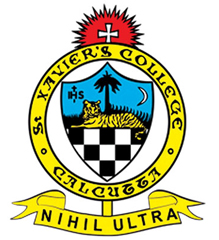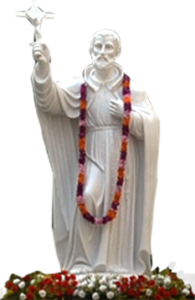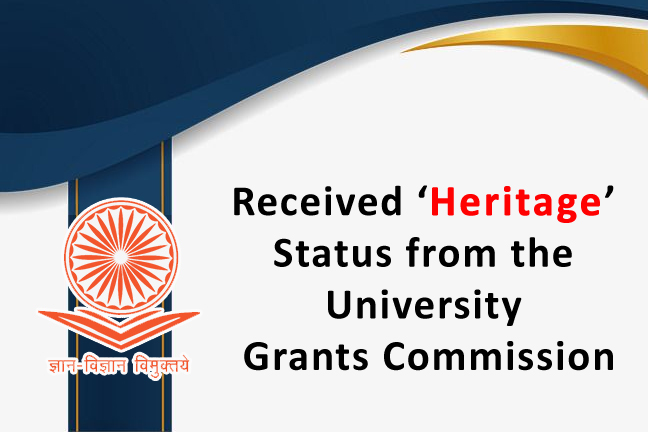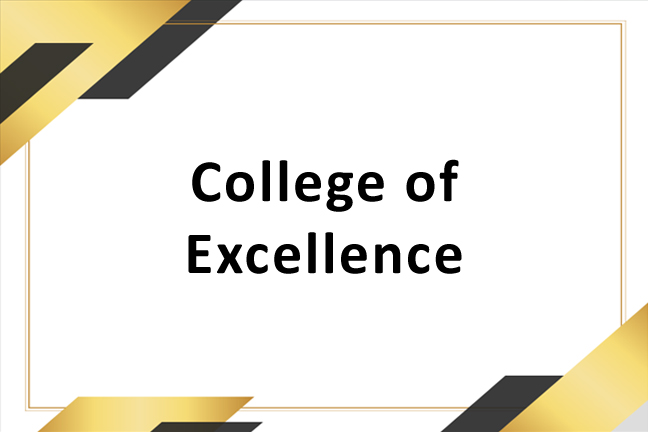A host of seven Belgian Jesuits arrived at Calcutta in November 1859, under the leadership of Fr. H. Depelchin (Rector: 1860-1871), in the Founding Father of the second St. Xavier’s, They shifted St. Xavier’s from Chowringhee to the Sans Souci Theatre in January 1860, which is now the honest home of learned professors and zealous students.
With one hundred and fifty two years of service to the nation, St. Xavier’s College, Kolkata, has grown today into a leading educational institution in India. Both St. Xavier’s School and College are proud of their contribution to the cause of education and culture in Bengal for 152 years. These twin institutions have produced many great educationists and students who earned regard and respect for their Alma Mater.
Fr. E. Lafont was appointed Rector in October 1871, He was a gifted teacher of physics. The terrible cyclone of November 1864 proved the begging of his fame. The catastrophe might have been much greater, had not Fr. Lafont signaled the timely warning.
It was Fr. O’Neill (Rector: 1904-1913) who gave the College its crest and the motto: Nihil Ultra, a motto, significant and suggestive of a noble ideal, of an unconquerable hope, that urges the Xaverian to a consistent quest for the higher. The motto of the young Xaverian is the old maxim : ” Perfectum nihil est, aliqiriddum restat agentiim” (Nothing is Perfect as long as anything remains to be done).
The tiny seed has grown into a mighty tree. In the year of its centenary (1960), St. Xavier’s had on its rolls 3503 students. It has, now 50 years later, 7, 106 students of whom 2,162 are in the school and 4,944 in the college. A total teaching stuff of 213 is educating them. The school section, starting from the Primary, leads up to the ISC Final Examination. The College offers UG and PG Courses under five faculties : Arts, Science, Commerce, Business Administration and Education.
St. Francis Xavier is the Patron of St. Xavier’s College. There is not an educated Indian who has not heard the name of Francis Xavier. It is to India that Ignatius of Loyola, the Founder of the Society of Jesus, sent his greatest son, Francis Xavier in 1542. Xavier was a zealous “missionary on the move”. He sailed to Malacca and Japan in 1549 where he spent two and a half years. In April 1552 he set sail to China via Malacca from Goa, never to return alive. He died at Sancian, a small island facing china, on 2 December 1552. Wherever he went, he plunged himself into charitable and pastoral work preaching the message of God’s love to people. He worked in India for 10 years from 1542 to 1552, called the Xaverian decade.
The list of the old students of St. Xavier’s includes many scientists, actors, film makers, poets and industrialists in Bengal. It can boast of some of its pupils who became international figures of repute: Rabindranath Tagore and Jagadish Chandra Bose. While Tagore was impressed by the relationship between teachers and students at St. Xavier’s, Bose found encouragement for his introduction to science in the person of Fr. Lafont, who was called “the father of science” in India. Three chief ministers of Bengal – H. S. Suhrawarby, Siddhartha Shankar Ray and Jyoti Basu passed through the portals of St. Xavier’s. You will invariable come, across, in any important office in Kolkata, a Xaverian who has excelled in his field.
St. Xavier’s has always been known for his cosmopolitan and national character. Much before the expression “national integration” gained currency, St. Xavier’s had tried to foster among its students the spirit and practice of it. Coming as they do from all over India and from various communities, they live in complete harmony, understanding and mutual respect. Thus they are encouraged to develop beyond local and group affinities, loyalties to the country and the society at large.
The National Assessment and Accreditation Council (NAAC) recognized St. Xavier College as an “A” grade institution in 2003. In May 2006, it was declared a College with Potential for Excellence by the UGC. From July 2006, it became an Autonomous College (the first in West Bengal). In 2011, NAAC assessed St. Xavier’s as an Autonomous College with a CGPA of 3.53 on a scale of 4. In 2012 UGC team visited the college. The team granted the renewal of Autonomy. St. Xavier’s College has purchased 17 acres of land at Rajarhat and has taken possession of the property. The foundation stone at Rajarhat was laid by the Honorable Chief Minister of West Bengal, Ms Mamta Banerjee on 27th December, 2013. His Grace Archbishop Thomas D’Souza blessed the foundation stone and Fr. Jeyaraj Veluswamy SJ. Provincial blessed the site.
In March 2014 St. Xavier’s has been honored with the status of “College of Excellence”. In July 2014 the rural face of St. Xavier’s set up the campus at Raghabpur, South 24 Parganas – The college offers courses in B. Com Honours, Bengali Honours and BA Genral. An Honours course in History will be offered from July 2015.
The EMMRC building at the EM By pass campus is another instance of the extenstion of the college.
The Boy’s Hostel is in use from July 2014. The boys presently staying in Park Street Hostel will shift to the new hostel. The Girls Hostel is nearing completion. The girls’ hostel will be functional from July 2015 for the session 2015-16.
St. Xavier’s has over these 156 years remained steadfast and persevered in the midst of troubles and anxieties. Now with all the richness of the past, it embraces the future with the same spirit- “Nihil Ultra” (Nothing beyond).







